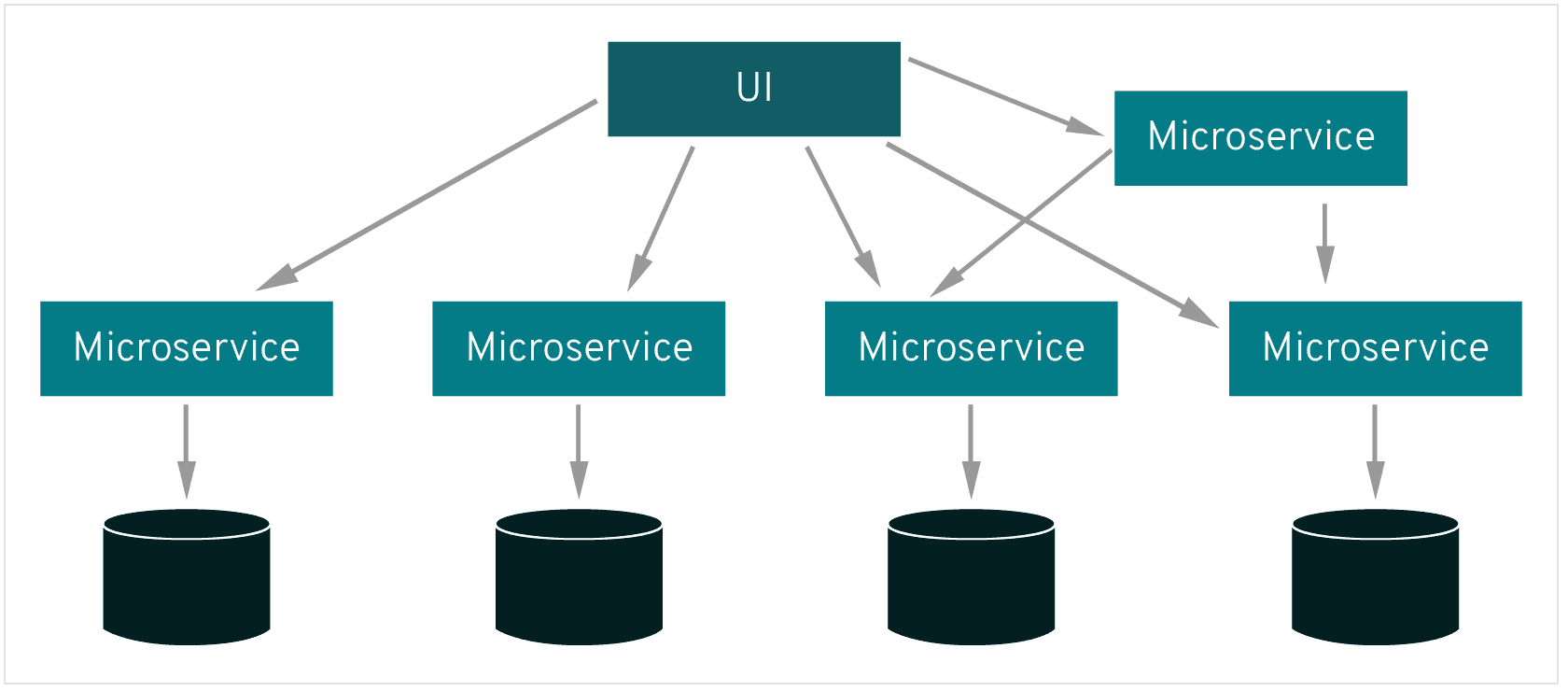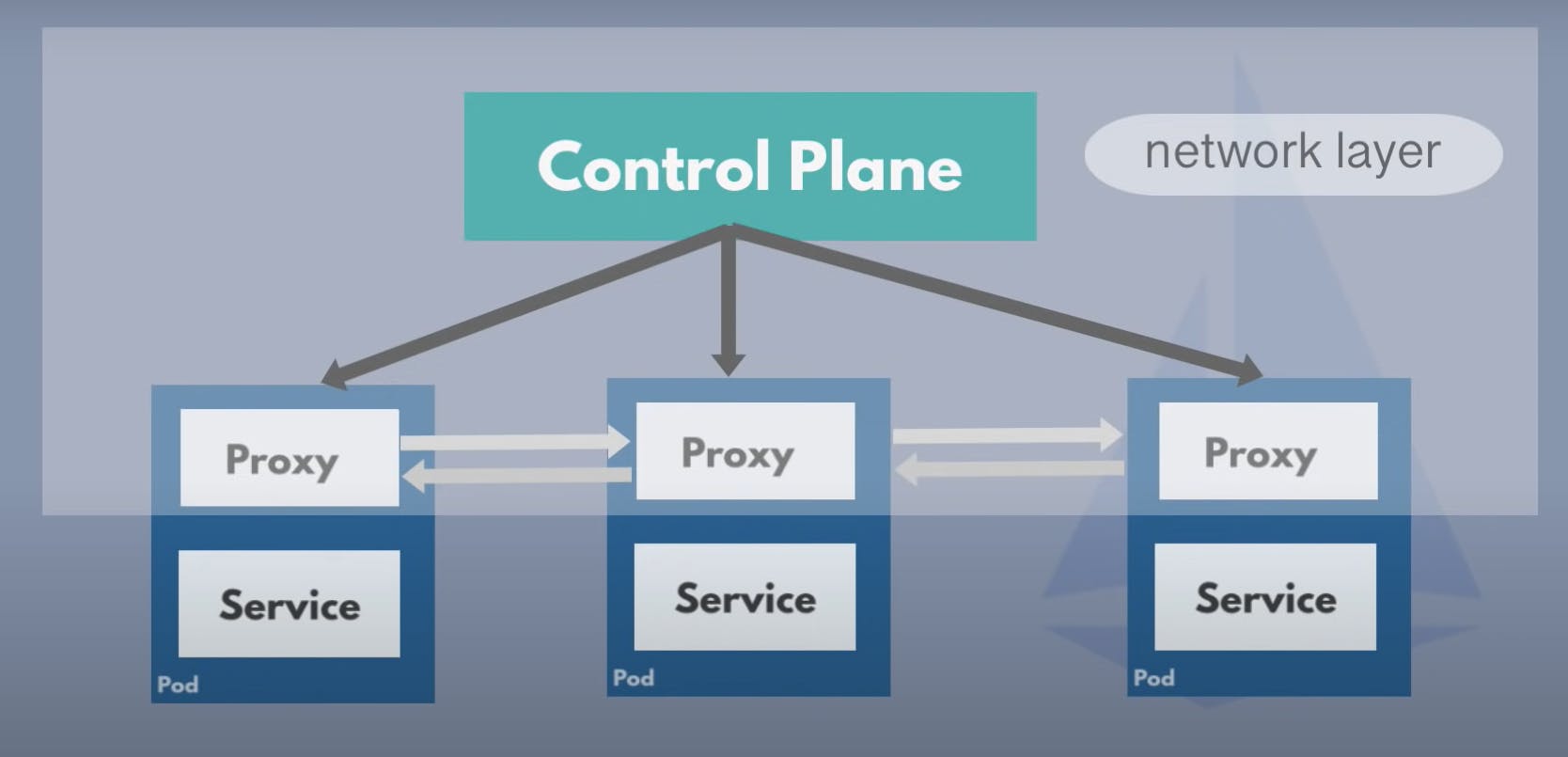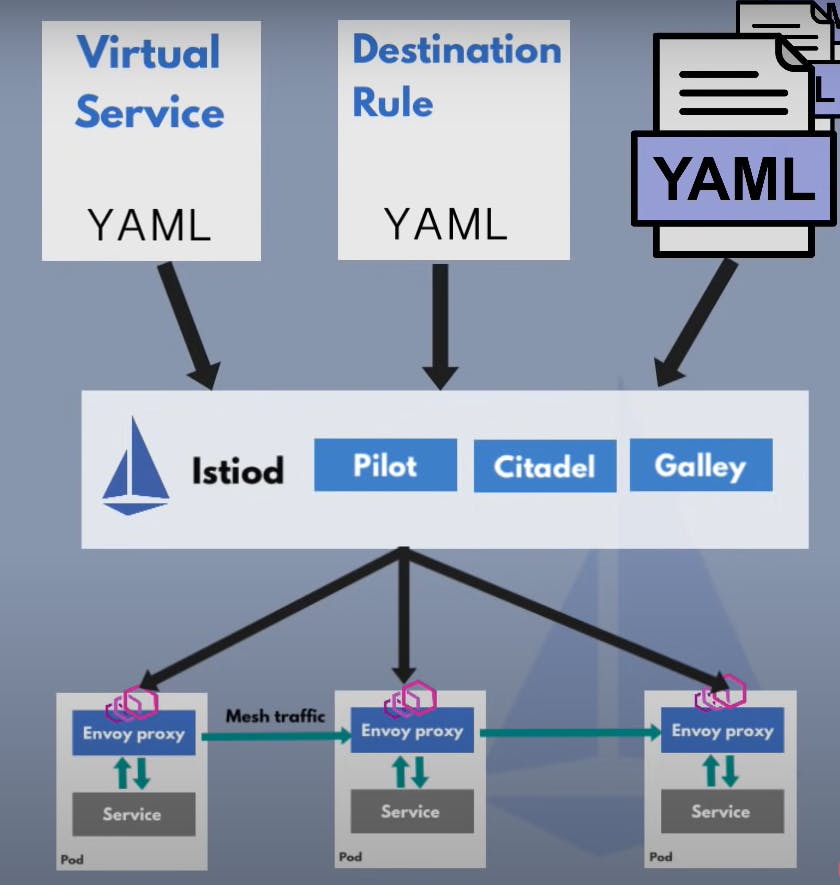Introduction
Hello all, In this blog we are going to learn about Service Mesh and one of its implementation Istio, to understand the whole idea behind it, we are going to take look at the following points
- Service mesh & istio
- Challenges of Micro-service architecture
- Core features of service mesh
- Architecture
- How to configure Istio?
So lets get started

What is Istio? What is Service Mesh?
Istio is a service mesh in order to understand Istio we need to understand service mesh Service mesh : Service mesh is a popular solution for managing communication between individual Microservice applications , but why do need a dedicated tool and what are the challenges ?

Challenges:
When we move from Monolithic to Microservice applications we introduce a couple of new challenges for eg: we have an online shop made up of several microservices like a) web server which gets the UI request, a payment microservice to handle the payment logic, shopping cart, Inventory and so on and we are deploying our microservice architecture on the Kubernetes cluster so now what does our current setup need?
The different microservices need to talk to each other, there should be some sort of communication between all of them for the proper functioning of the online shop
so how does services know how to talk to each other ? what are the end points of each service ?
All the service endpoints that the web server talks to must be configured for the web server so when we add a new Microservice we need to add the endpoint of that service to all the microservice that need to talk to each other so we have that information as part of the application deployment code
Now what about Security in our microservice application setup ?

Generally, In common Environments in development projects, you have firewall rules setup for your Kubernetes cluster maybe you have a proxy as an entry point that gets the request, so you have security around the cluster, however once the request gets inside the cluster the communication is insecure microservices talk to each other over HTTP or some insecure protocols also services talk to each other freely i.e Every other service inside the cluster can talk to any other service, so there is no restriction on that this means if the attacker gets inside the cluster he can do anything, we don't have any additional security inside

Solution
The solution to all this challenges is Service mesh. A service mesh with side care pattern

side care proxy :
- which handles the network Logic
- acts as a proxy
- third party application
- cluster operators can congifure it easily
You dont have to add that side car congifuration to your microservice deployment yaml file because service mesh has a control plane that will automatically inject this proxy in every micrroservice pod so now they can talk to each other through those proxies and the network layer for service to service communication consisting of control plane and the proxies is a service mesh
Traffic split
In addition to the above features, one of the most important features of a service mesh is traffic split what is traffic split ?
When changes are made to a payment application for example a new version is built, tested and deployed to the production environment obviously you can rely on testing but what if there is a bug you can't catch in testing so in this case you don't want to end up with a new version of a payment service in production that doesn't work

so you want to send maybe only 5% or 10% traffic to the new version over a period of time to make sure it really works . so with service mesh you can easily configure a web server microservice to direct 90% of the traffic to version 2.0 and 10% to version 3.0 which is also known as canary deployment .
Istio Architecture
Service mesh is just a pattern or paradigm and Istio is one of its implementations In Istio architecture, the proxies are envoy proxies which is an independent open source project which Istio and many other service mesh uses and control plane component is Istiod which manages and injects the envoy's proxies in each of the microservice pods

Note :
In earlier versions of istio until v.1.5 istio control plane was a bundle of multiple components it has citadel, mixer, pilot and some other components However in v.1.5 all of these components were combined in one single Istiod component to make it easier for operator to configure and operate istio So the architecture comprises two component, control plane which manages Data plane (group of envoy proxies)
How to configure Istio ?
so now how do we configure all these features for our mirco service application ?

As we don't have to adjust Deployment and service k8s YAML files so all the configuration for istio components will be done in istio itself having a clear separation between application configuration and service mesh configuration istio can also be configured with Kubernetes YAML files as it uses CRDs extending the kubernetus API CRD is nothing but a custom Kubernetes component/object for e.g.: Prometheus
SSo using a few istio crds we can configure different traffic routing rules between our microservices like which services can talk to each other, traffic split configuration, retry rules and many other network configurations and there are two main CRDs for configuring service to service communication
a) Virtual Service
how you route your traffic to a specific destination
b) Destination rule
Configure what happens to traffic for that destination, so we create CRDs and istiod converts this high level routing rules into envoy specific configuration and send that configuration out to all the envoy proxies as we don't configure proxies we configure control plane
Proxies can communicate without connecting to istiod
Istio features

In addition to configuring proxies istiod also has a central registry for all the microservices so no need of a static configuration of endpoints for each microservice when a new microservice gets deployed it will automatically get registered in the service registry without the need of any additional configurations and using this service registry the envoy proxies can now query the endpoints to send the traffic to relative endpoints in addition to this dynamic service feature istiod also acts as certificate authority and generated certificates for all microservices in the cluster to allow secured TLS communication between proxies and those microservices
Metrics and Tracing
Istiod also has metrics and tracing data from the envoys proxies that it gathers and later can be consumed by monitoring server like Prometheus or tracing servers etc. to have out of the box tracing for your whole microservice application
istio Ingress gateaway
It is basically an entry point to your Kubernetes cluster it's like an alternative to nginx ingress controller so istio gateway runs as a pod in your cluster and acts as a load balancer by accepting incoming traffic in your cluster and gateway will then direct traffic to one of your microservices inside the cluster using virtual service component, and you can configure the gateway using the CRD gateway
Conclusion
Now we have understood the concept of Service Mesh and Istio, I hope you have gotten the knowledge behind it and how you can use it. The next task for you is to practice, explore & Implement!

Follow Kubesimplify on Hashnode, Twitter and Linkedin. Join our Discord server to learn with us.


